Thom Browne Isn’t Done Reinventing Menswear

- Oops!Something went wrong.Please try again later.
Courtesy of Thom Browne / Sonny Vandevelde
This is an edition of the newsletter Show Notes, in which Samuel Hine reports from the front row of the global fashion week circuit. Sign up here to get it in your inbox.
Thom Browne was one of the first major American menswear designers to design dresses for guys, or at least to design dresses that he actually produced and sold in the men’s section. I know because I own one. Remember Pete Davidson’s Met Gala fit? I got my hands on the same prim column dress, but in gray, a few years earlier before the comic’s infamous red carpet appearance; Browne first introduced the silhouette in 2017.
I have yet to wear the dress, but that’s beside the point. The point is you can’t let Browne’s shrunken schoolboy uniform fool you—he’s much more of a punk than he lets on. Browne has always twisted conformity—gray suits, wingtip brogues—to radical ends, and for years he’s reinvented contemporary menswear more radically than any of his peers. Now, it often looks basically identical to his scarily chic womenswear. Speaking of punk, Browne has practically made the kilt more popular than the Sex Pistols. And on Wednesday afternoon in New York he busted just about every last remaining menswear taboo.
“Let’s see, I'm putting guys in unrealistically wide-shouldered tops and cripplingly hobbled skirts…” Browne was backstage at The Shed a few hours before his Valentine’s Day runway show that would close out this edition of New York Fashion Week. The designer and reigning CFDA chairman can be as dry as a glass of Krug, but I detected a hint of delight in his voice as he explained that this season, “there’s not so much difference between men’s and women’s.” Browne refrains from over-intellectualizing his museum-grade work, and he doesn’t consider himself a paragon of gender-fluid fashion. But he loves the history of fashion, and clearly appreciates the fact that he’s introducing new sartorial shapes for men. What he’s doing with the hobble skirt, he said, is “making them relevant for today.”
Before you clear out room in your closet, I’m guessing the long, narrow Edwardian style isn’t destined for the NBA tunnel, given that it is designed to be difficult to walk in (hence the name), as many of the models discovered as they tip-toed around the dark, snow-covered set later that afternoon. Browne themed his Fall-Winter 2024 collection around “The Raven,” and tapped Carrie Coon to read the Edgar Allen Poe poem over the spooky soundtrack. It was thematically dark, as Browne’s often can be, and the signature gray of his tailoring had been replaced by inky shades of black, matching the dead trees and macabre cawing that completed the set.
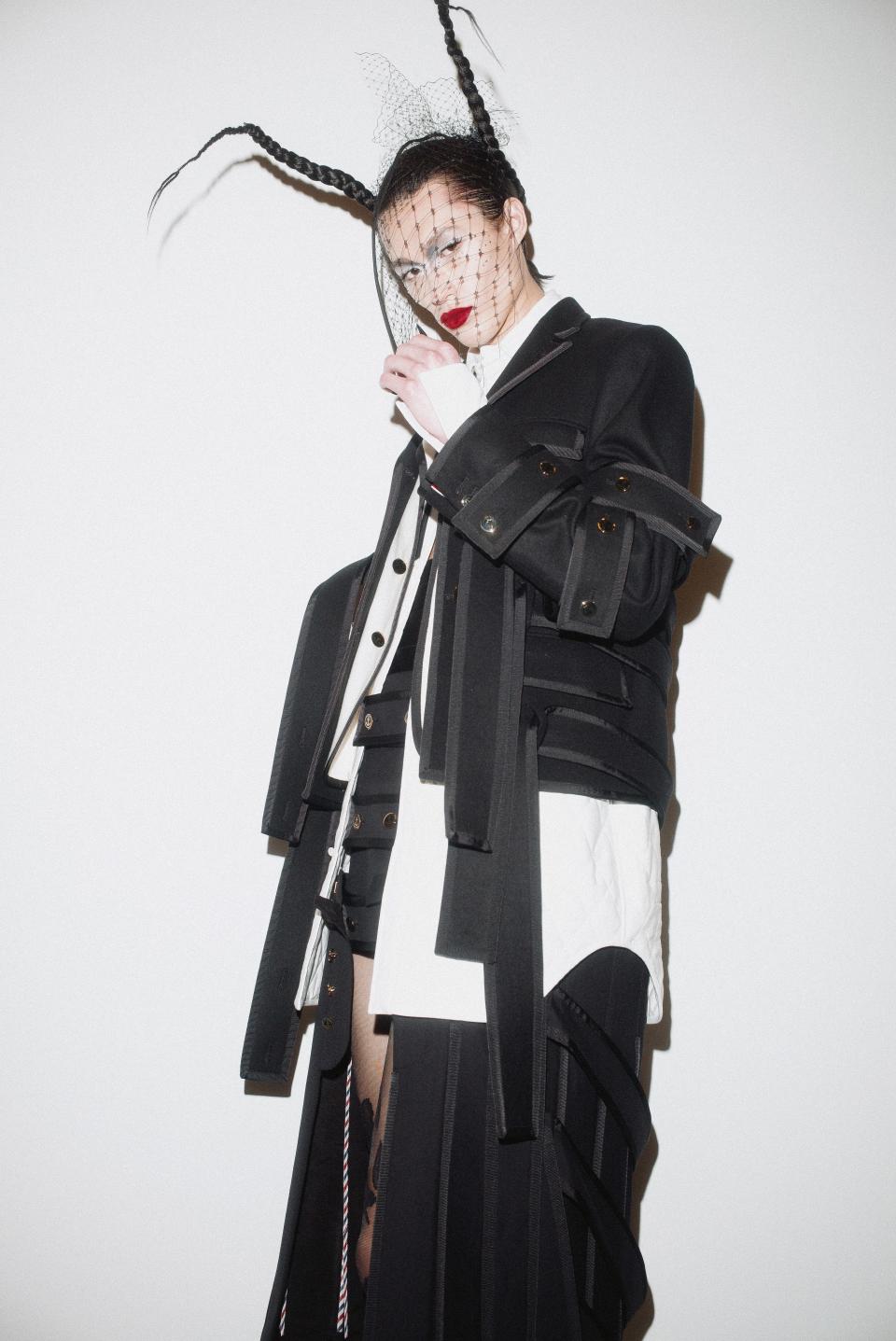
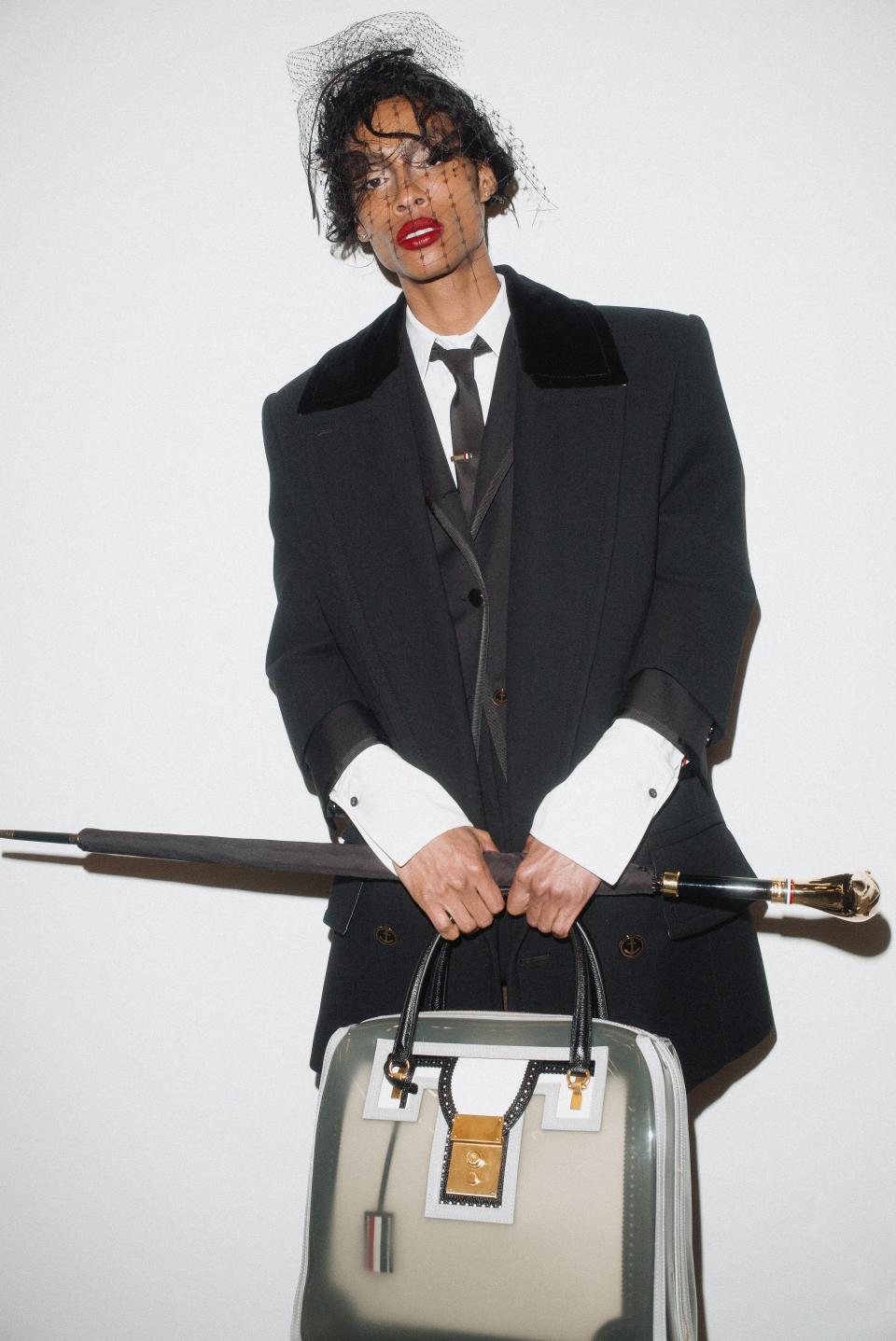
Theatre, rather than wearable clothes, is often prioritized at Browne’s live shows. But there were several new silhouettes that looked unexpectedly comfortable, like semi-sheer tights worn with a blazer. And six years after first putting dresses on men, Browne has now shrunk his slips to Barbie-like proportions, so short they almost certainly require a TB codpiece underneath. If the hobble skirt might not have much commercial appeal, don’t count out the mini dress. After all, a decade ago, not even I would have believed that Hollywood actors and marquee hoopers alike would be fiending for Browne’s knife-pleat kilts—or that I would eventually own one of the designer’s dresses.
During our pre-show interview, I asked the designer about “The Raven,” his newly-acquired rambling estate, and whether NYFW needs more oversight. And, of course, I asked about his most daring men’s silhouette yet. He responded like it was the most obvious thing in the world. “It's a ridiculously short mini dress on a guy, which looks good,” he said. “It just looks good.”
GQ: Gender isn’t a very hard idea in your work, and recently you've been pushing even further. “Gender-fluid” isn’t the right term exactly—it’s more like playing with archetypes of women’s clothing on men, and visa-versa.
Thom Browne: It started with the Spring-Summer 2018 show in Paris. And from then on, it's really been about creating interesting ideas and putting them on either a man or a woman. This season, let's see, I'm putting guys in unrealistically wide-shouldered tops and cripplingly hobbled skirts… So it's really about taking interesting ideas from the past and bringing them to today, putting them on either a man or a woman and making them relevant for today. Especially because the world we live in is so different. Guys and girls, they don't always want to see specifically men's clothes or women's clothes. With my shows, I want them to see just ideas that can be worn either by a man or a woman.
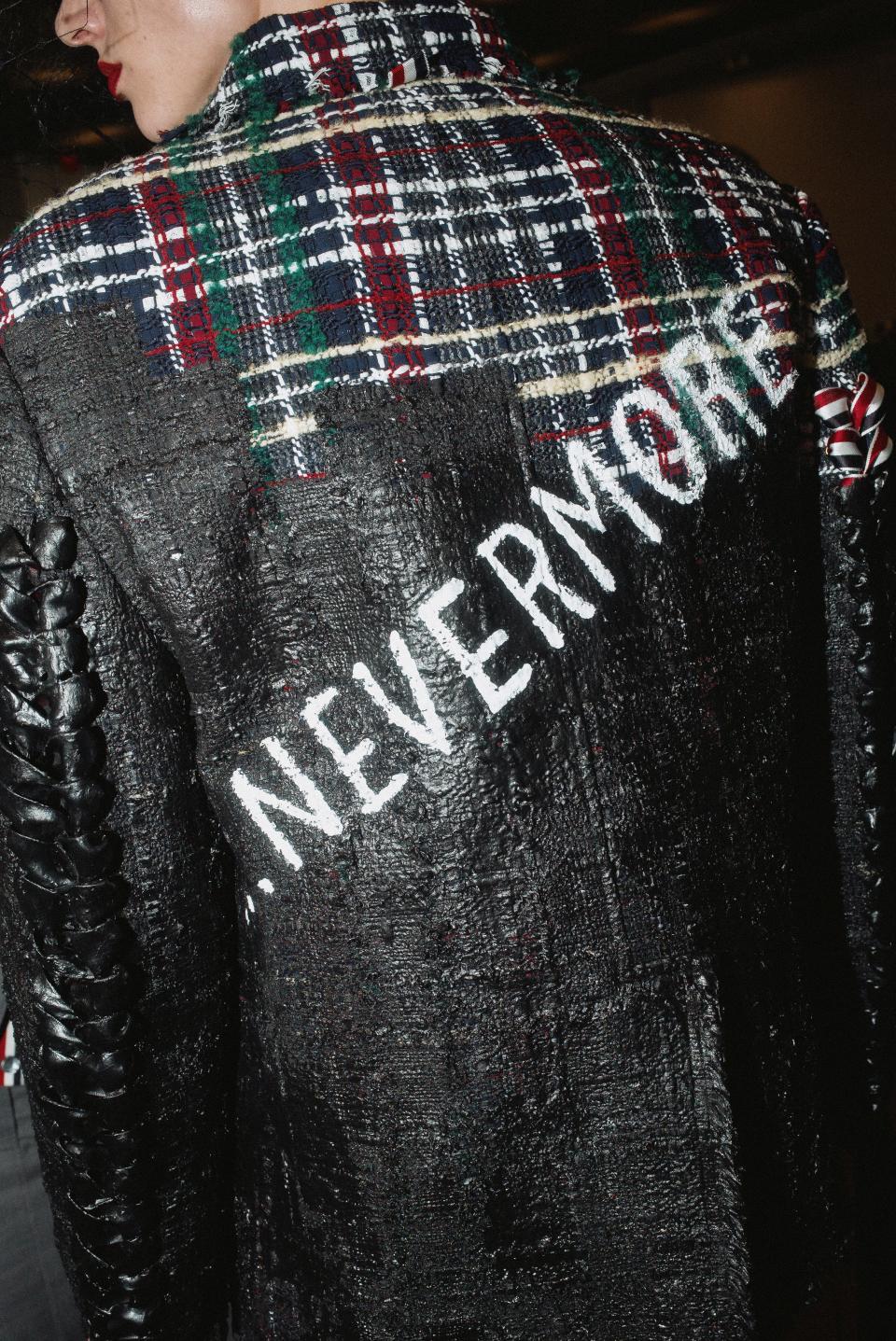
This season a lot of men's designers in particular have been thinking about wearability and trying to find a balance between introducing new ideas, while also delivering a lot of products that men will want to buy and wear in six months. How do you think about wearability exactly?
I veer, especially in the shows, more towards the conceptual. The ideas are more important, and then the wearability is derived from the ideas that I show. But you do see some real ideas that are more understandable in this show. I do, sometimes to a fault, want to play into opening people's eyes more than showing them what they can wear. But you will see there is reality in the collection as well. So it's a good mix of interestingly understandable ideas, and then some more interestingly conceptual ones.
It's also very black and white.
It's all black and white, playing into the story of “The Raven.”
Tell me about bringing the poem into the collection.
I think being an American designer, whether I show here in New York or if I show in Paris, it's important to show the American sensibility in what I do, whether it's the reference for the show or if it's a reference in details in the clothes. Edgar Allan Poe is such an iconic American author, and also I thought the mood of the poem was right, so I wanted to play with that mood.
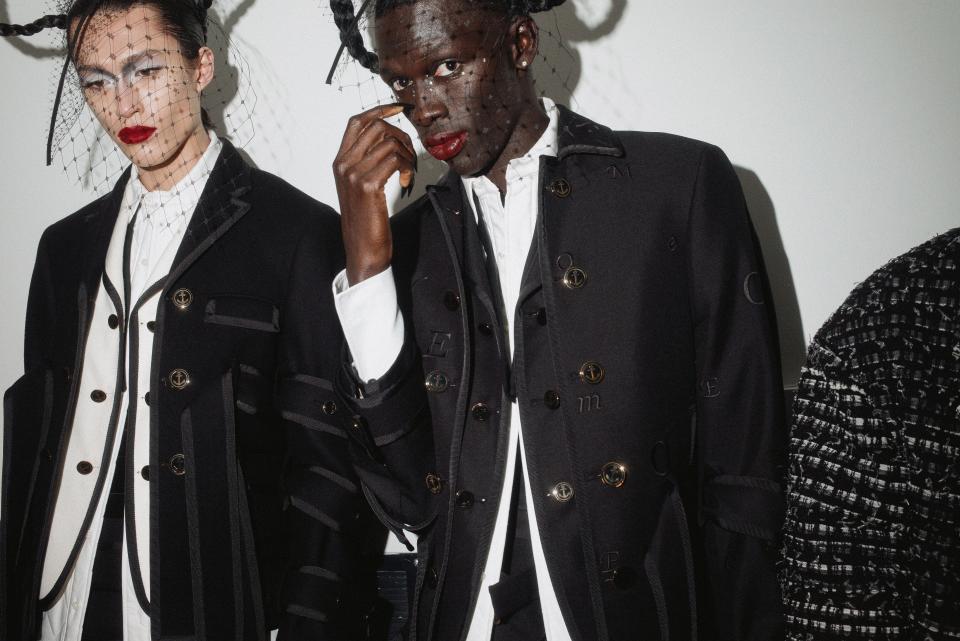
I know that you recently purchased a historic home upstate, Teviotdale. I wonder if that experience has involved, I don’t know, gothic themes.
Well, it's a very American house built by an 18th-century American family, so it does play into this story as well. And then it's a beautiful project for us because there's a lot to do. And I'm sure up there now it feels very bleak, and so there's a good synergy between what you see on the set and what you see upstate right now.
Your last show before this was your couture debut in Paris, which was both a career milestone and one of the most epic of your many epic shows. Did that production change the way you thought about this one?
I don't know, I don't really separate them in a way. I love doing couture, but this show, I’m really approaching it almost in the same way. I love showing here in New York, and I love showing in Paris, and I think it's important to show in Paris so that Europe sees American design at the highest level. And then here in New York, I’m leading by whatever example I can set. And I think it's important to bring even couture elements and couture fabrications and construction to a ready-to-wear collection here in New York. So they all compliment each other.
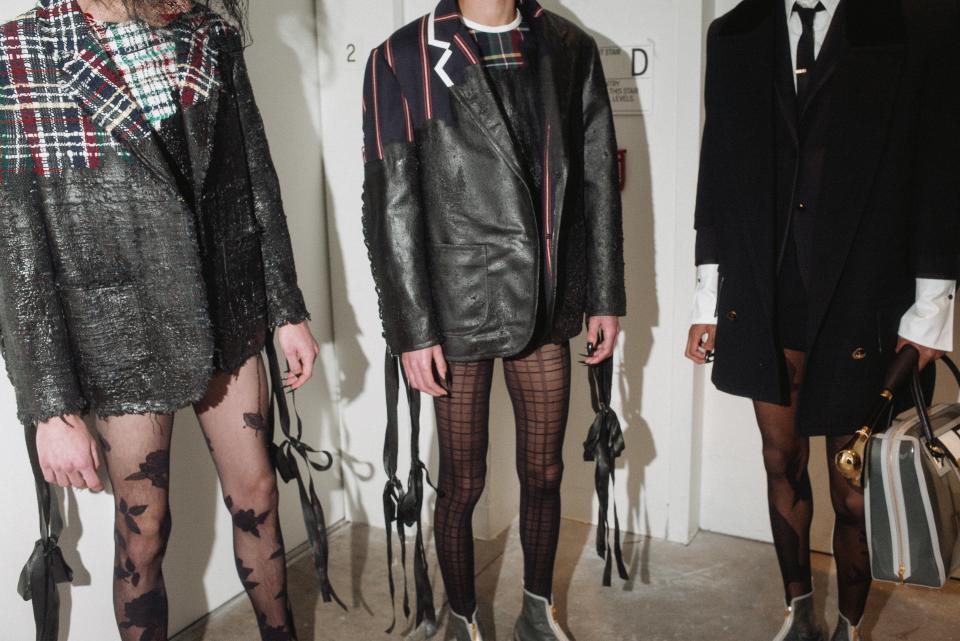
Can you tell me a little bit about the tiny dresses and tights you’ve got some of the men wearing? I don't know if you’ve ever done that before.
Tights I've never done on guys. Some things, it's nice to just see how it looks, and it looks good, so I’m keeping them on the guys. And then the dresses, we dipped some of them in black paint to really bring them into the collection. It's a ridiculously short mini dress on a guy, which looks good. It just looks good.
Oysters and martinis at Grand Central. *Real Housewives* and low-rise jeans downtown. Metrosexuals and Beyoncé in Bushwick. Check out our NYFW rundown from the fall collections.
Menswear
His pants are too high, his jackets are too tight. So how did Thom Browne become the most influential menswear designer in America?
Finally, this is a little inside baseball, but on my way over I read Christina Binkley’s Vogue Business story about how New York Fashion Week needs a “mom,” someone who can manage a schedule where shows are currently too far apart, and where people have to make tough choices about what to skip because of difficult logistics. This season in particular it seems like a lot of shows have been spread out between Manhattan and Brooklyn. What do you think about that, as the CFDA chairman?
I think the logistics are not ideal. It's not ideal that people have to pick which shows they attend because of logistics. I think that's a shame. But I do want people to be able to show the way that they want to show and show where they want to show. I think it's more just a conversation and maybe we can get it to a place that is, I guess, easier logistically. But I've never shown in a central location, so I always feel like I want everyone to be true to themselves and do what they feel is right for themselves. I don't know if there is a real answer.
But you've also never shown in Brooklyn.
I've never shown in Brooklyn.
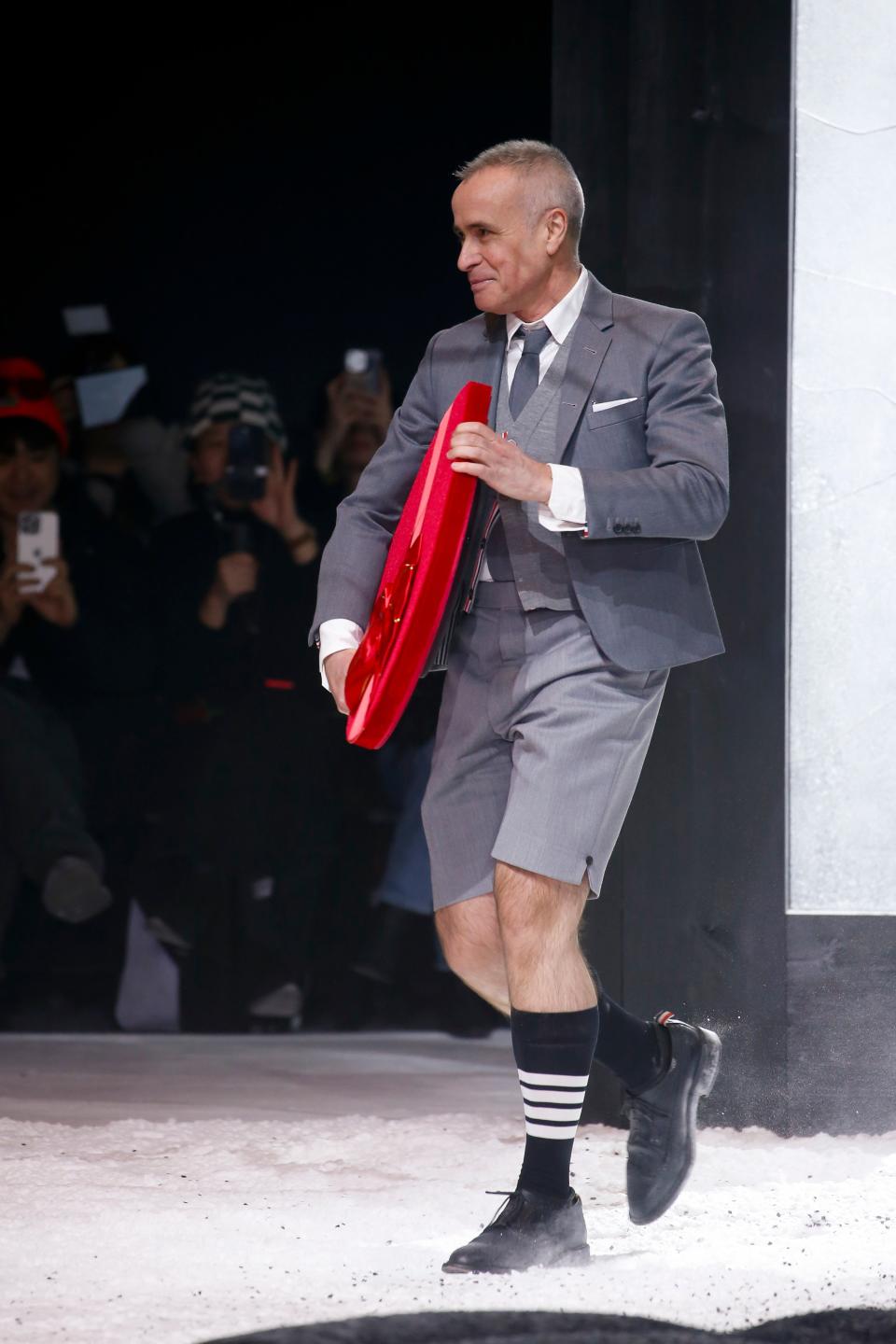
See all of our newsletters, including Show Notes, here.
Originally Appeared on GQ



